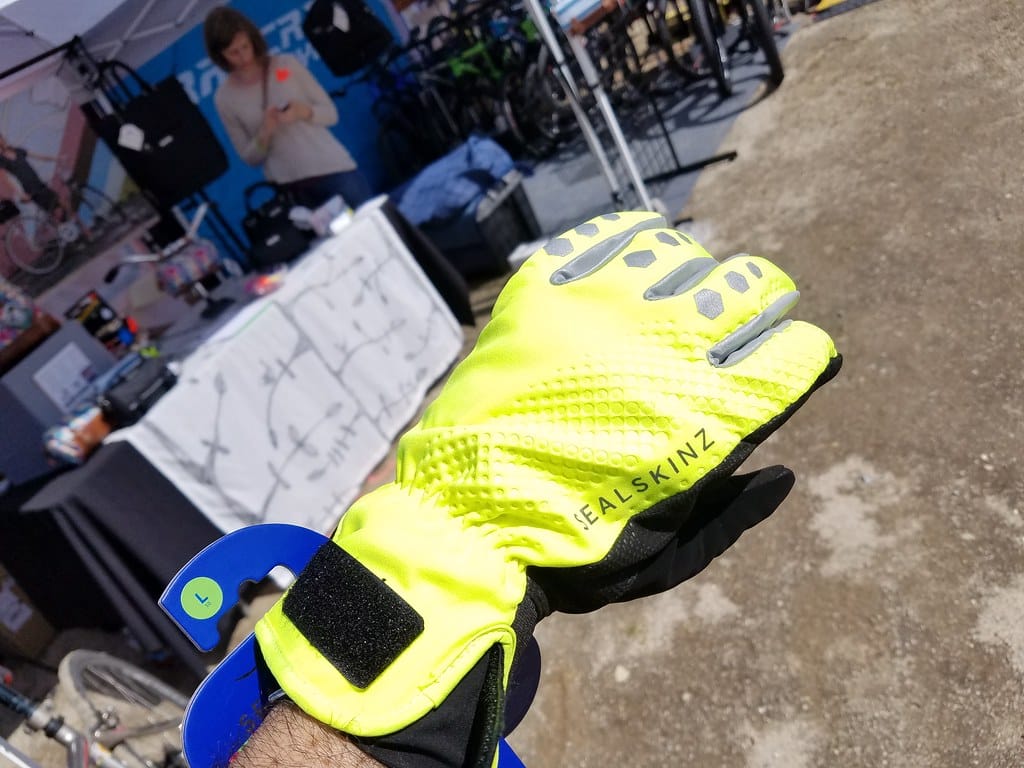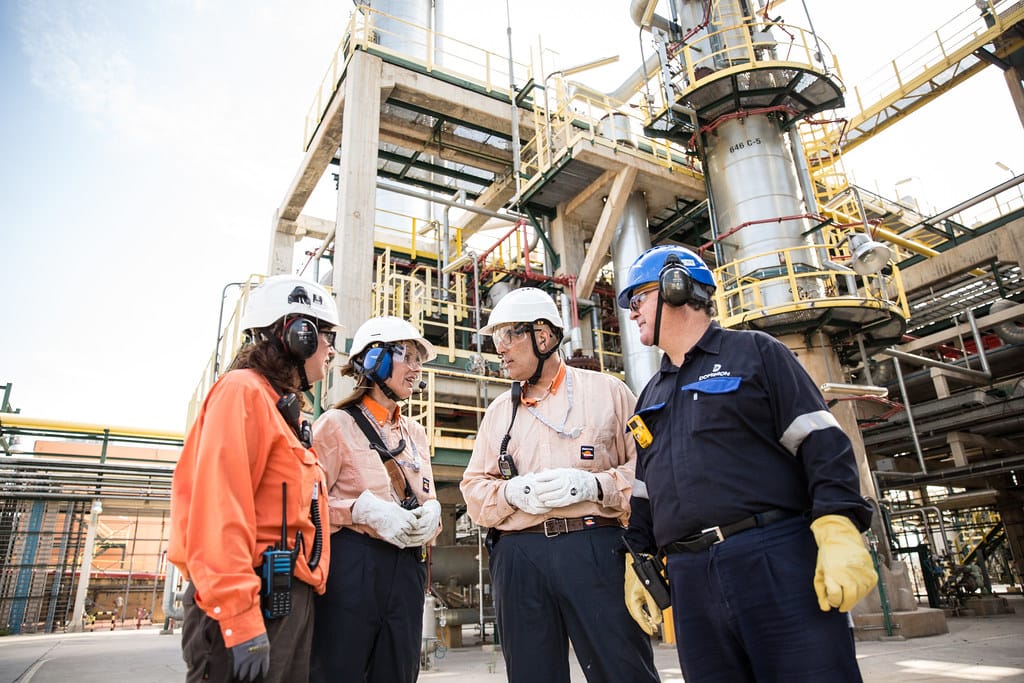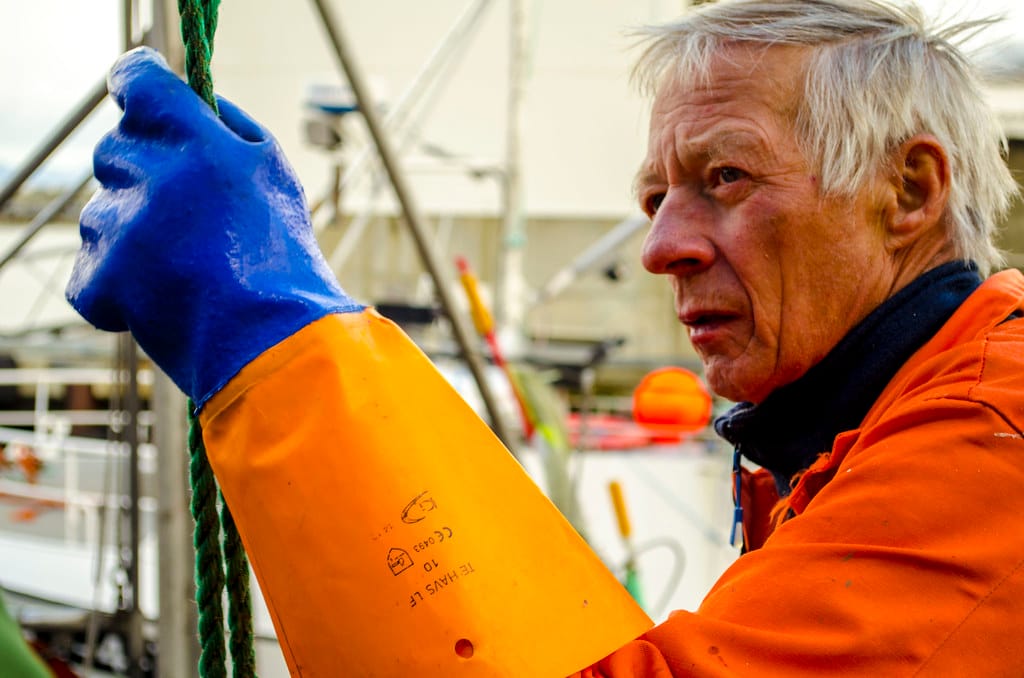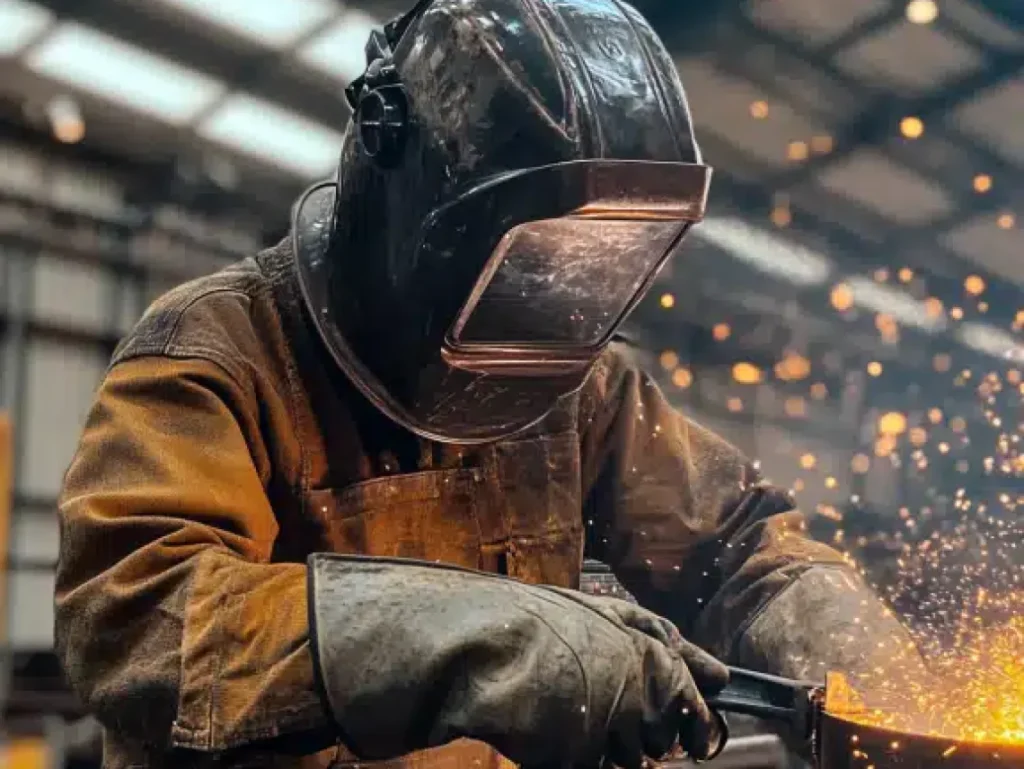
Introduction
In the global trade of PPE and industrial workwear, certification is not just a piece of paper—it’s the foundation of trust, legality, and business continuity. A single fake certificate can collapse an entire supply chain, ruin reputations, and drain years of hard-earned savings.
This is the story of Emeka, a Nigerian agent who learned this lesson the hard way.
Three years ago, Emeka was an ambitious entrepreneur representing a Chinese workwear factory in Nigeria. He had passion, clients, and momentum. But a single shipment with fake CE certificates destroyed everything—his cargo was detained at port, his clients canceled orders, and he lost over $50,000.
Yet, this story doesn’t end in failure. Through resilience, education, and better partnerships, Emeka rebuilt his business stronger than ever. Today, his brand is one of the most trusted names in West Africa’s safety gear market.
His journey offers critical insights for importers, distributors, and agents worldwide—especially those trading PPE, where compliance means survival.
1. The Beginning: A Promising Partnership
1.1 Discovering the PPE Opportunity
In 2019, Emeka was running a modest trading business in Lagos. He dealt in electrical supplies and hardware equipment, serving construction companies and oil contractors.
During one meeting with a procurement officer from a local engineering firm, he was asked:
“Can you also supply safety clothing—reflective jackets, helmets, gloves?”
That simple question opened Emeka’s eyes to the potential of the PPE market. Nigeria’s construction and oil industries were booming, and demand for safety equipment was surging.
Emeka began researching the market. He discovered that most PPE in Nigeria was imported—mostly from China, some from India, and a little from Europe. The price gap between suppliers was huge, often due to brand premiums and certification costs.
He realized:
“If I can find a good Chinese manufacturer, I can offer affordable and certified products to Nigerian clients.”
1.2 Partnering with a Chinese Factory
After weeks of searching online through Alibaba and Made-in-China, Emeka found a Chinese workwear factory that looked professional. Their website was polished, their sales manager was fluent in English, and they proudly displayed CE, ISO, and EN certifications for their products.
They offered him exclusive distributorship rights for West Africa if he could place an initial order of $50,000.
It seemed like the opportunity of a lifetime.
Without deep due diligence—just trust in the factory’s documents—Emeka signed the agreement and wired the payment.
The goods were shipped within six weeks: reflective coveralls, safety shoes, gloves, and vests. Everything appeared perfect. The paperwork looked genuine.
What could go wrong?
2. The Disaster: Fake Certificates and a Blocked Shipment
2.1 The Port Shock
When the shipment arrived at Apapa Port in Lagos, Emeka’s clearing agent noticed something unusual. The port authority requested additional verification for the CE and ISO certificates attached to the cargo.
Emeka didn’t worry at first. He forwarded the certificates to the agent and assured him everything was legitimate. But within a few days, his phone rang with devastating news:
“Sir, your certificates are fake. The numbers don’t exist in the EU database.”
At first, Emeka couldn’t believe it. He thought it was a misunderstanding. But after cross-checking the certificate numbers with official EU portals and testing labs, the truth became undeniable:
The certificates were falsified.
The result?
The entire $50,000 shipment was held at port for non-compliance. Customs demanded additional documentation and inspection fees. Clients canceled orders. The Chinese supplier stopped replying to emails.
2.2 The Financial and Emotional Breakdown
The financial impact was catastrophic. Emeka had borrowed part of that $50,000 from business partners and family. Not only did he lose the cargo, but his reputation suffered.
Clients he had worked with for years stopped taking his calls. Some accused him of knowingly importing counterfeit products.
For months, Emeka couldn’t sleep. His business was nearly bankrupt, and his personal relationships were strained.
“It wasn’t just about losing money,” he later said.
“It was about losing face, losing trust, and realizing I didn’t understand the rules of international trade as well as I thought.”
3. Reflection: The Hard Lessons About Verification
3.1 Learning What CE and ISO Actually Mean
Determined to rebuild, Emeka decided to understand everything about product certification.
He spent weeks reading online resources, joining webinars hosted by European testing bodies, and even consulting with a local compliance expert in Lagos.
He discovered that:
- CE (Conformité Européenne) marking is not just a logo—it’s proof that a product meets EU safety, health, and environmental standards.
- CE certificates must be issued by a recognized Notified Body, each with a unique ID number that can be verified publicly.
- Many factories illegally copy or edit legitimate certificates to deceive buyers.
- Proper certificates include details like test reports, model numbers, validity periods, and issuing authority.
Emeka realized he had made the classic mistake: trusting documents without verifying their source.
3.2 How to Verify Certificates
He learned step-by-step how to validate certificates:
-
Check the Notified Body Number on the CE certificate.
Visit the official EU NANDO database (https://nando.europa.eu) to confirm the issuing body exists. -
Verify the Test Report Number.
Each report should have a unique reference that matches the product type and issue date. -
Contact the Issuing Organization Directly.
Most reputable labs (like SGS, Intertek, or TÜV) can confirm if a certificate number belongs to the applicant. -
Request the Factory’s ISO 9001 or ISO 45001 Certificate.
These prove the manufacturer’s quality management system is certified by a recognized authority. -
Cross-Check Labeling Consistency.
The manufacturer’s name and product model on the certificate must match the ones printed on the product packaging and tag.
By mastering this process, Emeka not only avoided future fraud but began educating others in his network.
4. The Rebuild: Partnering with Verified Suppliers
4.1 Finding a Compliant Chinese Partner
In 2021, Emeka began searching again—but this time, with stricter standards. He contacted only verified manufacturers with transparent documentation and certifications he could independently verify.
After weeks of careful screening, he found a workwear factory in Hebei, China, that was exporting to Europe and North America.
Their sales manager offered video tours of the production lines, introduced Emeka to their compliance officer, and provided links to official CE and ISO validation pages.
Everything checked out.
This time, Emeka started small—with a $10,000 test order. The factory shipped high-visibility vests, FR coveralls, and cotton uniforms, all with authentic test reports.
When the shipment arrived in Lagos, customs cleared it without issue. His clients—many of whom had previously stopped working with him—were impressed with the quality and transparency.
4.2 Building Back Reputation
Rebuilding trust was not immediate. Emeka understood that reputations take years to build and minutes to destroy.
He personally visited key clients, explained the situation honestly, and showed proof of his new supplier’s authenticity. Transparency became his selling point.
Slowly, customers returned.
They appreciated his honesty and commitment to quality. Within six months, Emeka was supplying three major construction companies again.
“I learned that hiding your mistakes doesn’t fix them,” he said.
“Owning them—and improving—is what rebuilds your name.”
5. Growth: Turning Compliance into a Competitive Advantage
5.1 Educating the Market
Once Emeka stabilized his business, he decided to share his experience to prevent others from making the same mistake.
He began organizing seminars and WhatsApp webinars for other Nigerian importers, teaching them:
- How to verify CE certificates
- How to avoid fraudulent suppliers
- How to use pre-shipment inspections
- Why genuine certification increases client confidence
Soon, Emeka wasn’t just a distributor—he was seen as an authority on PPE compliance in Nigeria.
This reputation gave him leverage. Government contractors preferred working with him because his documentation was always clear, verified, and audit-ready.
5.2 Expanding His Product Range
With renewed credibility, Emeka expanded his catalog beyond workwear. He introduced:
- Safety boots
- Chemical-resistant gloves
- Arc flash suits
- Flame-retardant rain gear
He also invested in branding, launching his own private label PPE line. His slogan became:
“Certified Safety, Verified Trust.”
This branding message resonated strongly in a market tired of cheap, uncertified imports.
By 2024, Emeka’s business had grown 400% from its post-crisis low.
6. Results: Clients Returned, Business Thrived
Emeka’s comeback story is remarkable not because he recovered his losses, but because he built a stronger foundation than before.
By 2025:
- He had 12 loyal corporate clients across Nigeria’s oil, gas, and construction sectors.
- His annual revenue exceeded $1.2 million.
- He maintained partnerships with three verified Chinese factories.
- He became a consultant for import compliance and quality control.
Most importantly, he regained trust—the most valuable currency in global trade.
His motto for every new deal is simple:
“If I can’t verify it, I won’t sell it.”
7. Key Lessons Learned
7.1 Verification Is Non-Negotiable
Never rely on certificates sent as images or PDFs alone. Always verify their authenticity through official databases or by contacting the issuing body.
7.2 Cheap Is Expensive
Low prices often hide hidden costs—fake certificates, customs penalties, or product recalls. Prioritize compliance over cost savings.
7.3 Transparency Wins Clients
Be honest with your customers about what you know and don’t know. Integrity builds longer-term relationships than temporary profits.
7.4 Build Supplier Relationships, Not Transactions
Reliable suppliers become partners who help you grow, share documentation openly, and protect your reputation.
7.5 Turn Mistakes into Strength
Failure, if studied properly, becomes your greatest teacher. Emeka’s loss turned into a roadmap for sustainable success.
8. Practical Guide: Certificate Verification Process
| Step | Action | Purpose |
|---|---|---|
| 1 | Request all certificates in editable PDF or scan with visible stamps | Avoid manipulated files |
| 2 | Check CE number validity on NANDO database | Confirm Notified Body authenticity |
| 3 | Verify issuing lab contact info (SGS, TÜV, Intertek) | Confirm document legitimacy |
| 4 | Match product details (model, material, test number) | Ensure product-certificate consistency |
| 5 | Ask for recent audit reports or ISO certifications | Verify factory quality systems |
| 6 | Use third-party inspection before shipment | Add final quality assurance |
| 7 | Keep verified certificates in client folders | Build transparency and trust |
9. Conclusion: From Loss to Leadership
Emeka’s journey from a $50,000 disaster to a multimillion-naira business is a story of resilience, responsibility, and reinvention.
He proved that trust can be rebuilt, but only through truth and discipline. His experience reshaped how Nigerian importers view compliance and created a ripple effect across the region.
Today, he no longer sees certificates as paperwork—they’re the lifeblood of global credibility.
For every importer, distributor, or agent, his story serves as a timeless reminder:
Verifying a certificate is not a formality. It’s your insurance policy against ruin.
Appendix: PPE Importer’s Verification Checklist
| Item | Verification Required | Tools/Method | Status |
|---|---|---|---|
| CE Certificate | Verify Notified Body ID | EU NANDO Database | ✅ |
| ISO 9001 | Check issuing organization | Certification body website | ✅ |
| Test Report | Match model numbers | Contact lab directly | ✅ |
| Product Label | Cross-check with certificate | Physical inspection | ✅ |
| Supplier Background | Verify business license | Chinese company registry | ✅ |
| Customs Documentation | Confirm HS code accuracy | Local customs office | ✅ |
| Factory Audit | Request video tour | Online or 3rd party | ✅ |
Final Inspiration
When asked what advice he would give new traders, Emeka said:
“Don’t be blinded by low prices or fast promises. Ask for proof. Verify everything. And if it’s too good to be true—it probably is.”
His comeback story stands as proof that authenticity, discipline, and resilience can transform even the worst setbacks into powerful comebacks.
In the end, Emeka didn’t just rebuild his business—he rebuilt his reputation, his network, and his confidence.
And that’s worth more than $50,000.
Zion Zhang
Recent Posts
 How a Brazilian Trader Used $5,000 to Break into the PPE Market2025年10月20日Introduction In a world where industrial safety and […]
How a Brazilian Trader Used $5,000 to Break into the PPE Market2025年10月20日Introduction In a world where industrial safety and […] From First Order to Market Leader: A Ghana Distributor’s 3-Year Journey2025年10月20日In the fast-growing African PPE and workwear market, small […]
From First Order to Market Leader: A Ghana Distributor’s 3-Year Journey2025年10月20日In the fast-growing African PPE and workwear market, small […] Scaling Your Workwear Brand: From Local Agent to Regional Distributor2025年10月15日In the workwear and PPE industry, many businesses start […]
Scaling Your Workwear Brand: From Local Agent to Regional Distributor2025年10月15日In the workwear and PPE industry, many businesses start […] After-Sales Service & Customer Retention in the Workwear Business2025年10月15日In the global workwear and PPE industry, many suppliers […]
After-Sales Service & Customer Retention in the Workwear Business2025年10月15日In the global workwear and PPE industry, many suppliers […] Government & Corporate Contracts: Winning Large PPE & Workwear Deals2025年10月14日Government & Corporate Contracts: Winning Large PPE […]
Government & Corporate Contracts: Winning Large PPE & Workwear Deals2025年10月14日Government & Corporate Contracts: Winning Large PPE […] Marketing Tactics: How to Promote Workwear in Africa, Middle East & Latin America2025年10月12日Marketing Tactics: How to Promote Workwear in Africa, […]
Marketing Tactics: How to Promote Workwear in Africa, Middle East & Latin America2025年10月12日Marketing Tactics: How to Promote Workwear in Africa, […]
CONTACT US
- Feel free to contact us any time. We will get back to you as soon as we can!
- +86-17303331701
